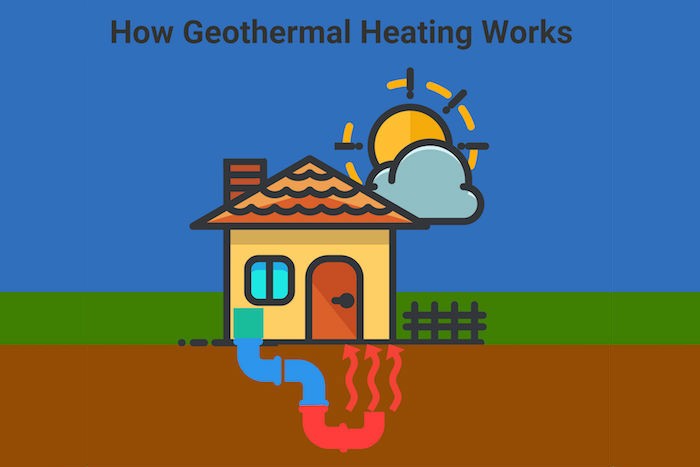The Hamptons Goes Green with Geothermal

A solution to global warming and pollution may be right under our feet. The heat found underground can be harnessed into energy, which can fuel almost any electrical system. The energy created by this heat, known as geothermal energy, is becoming an increasingly popular way for Hamptonites to heat and cool their homes.
A geothermal heating system works by pumping liquid into the ground through plastic pipes, which capture the earth’s heat, and distribute that heat throughout the home. In the summer, when the outside temperature is high, the system takes the hot air from the home and sends it underground, where it is cooled, and then released back into the home.
Pamela Glazer, architect and founder of Pamela Glazer Architecture, says, “Geothermal heating is really just a method of using the consistent 55-degree temperature of the ground to heat and cool a home.”
Geothermal heating reduces both electric and maintenance bills, as well as your carbon footprint over time. Once installed, the system requires very little maintenance. This is because the components are installed indoors, away from harsh outdoor elements. According to PSEG Long Island, the system can last over 20 years and reduce maintenance costs from 25% to 60%. Geothermal can be installed in almost any home. There are no ugly condensing units involved.
Doug Matz, owner and operator of Flanders Heating and Air Conditioning, says, “Geothermal heating is a great solution on a project-by-project basis. With some projects it doesn’t work, while other times it’s the best solution. For those it does work for, it can save 30% on heating and 50% on cooling.”
It’s important to note that a geothermal system is much more efficient at cooling a home than it is at heating. Bill Chaleff, architect and founder of architectural firm Chaleff and Rogers Architects, says, “With cooling, we’re running downhill. We’re taking the hot summer heat and dumping it to an infinite source of cool ground heat that absorbs it all. It’s how mother nature wants to go.”
Geothermal energy and heating produce almost no greenhouse gases or pollutants. This is because the heat from the system is in a closed loop. The system itself is completely renewable, but it does require electricity to power the compressor and other components. Since the majority of Long Island electricity comes from gas power plants, a geothermal system does rely on some non renewable energy. Chaleff says, “Heat pumps run on electricity, and that electricity is supplied to your home by a system that is 30% efficient, so the carbon footprint of producing electricity for a geothermal heating system offsets roughly the environmental gain you make.”
Pamela Glazer says, “My firm has done things to offset this environmental impact by powering geothermal systems with solar power. So, the energy needed to power the heating system can be renewable.”
The installation costs for a geothermal heating system can run from $10,000–$100,000. Matz says, “The cost of the job and the installation time depends on many factors such as the size of the house, the water supply, what direction it faces and how much insulation it has.”
While geothermal energy is proving an efficient alternative energy source, the industry is still in its infancy. According to This Old House magazine, only 47,000 geothermal units were installed in the U.S. in 2016, which is considerably less than the millions of general forced air units sold. However, with increased sales, especially in progressive areas such as the Hamptons, it appears that this energy source will continue to grow.









